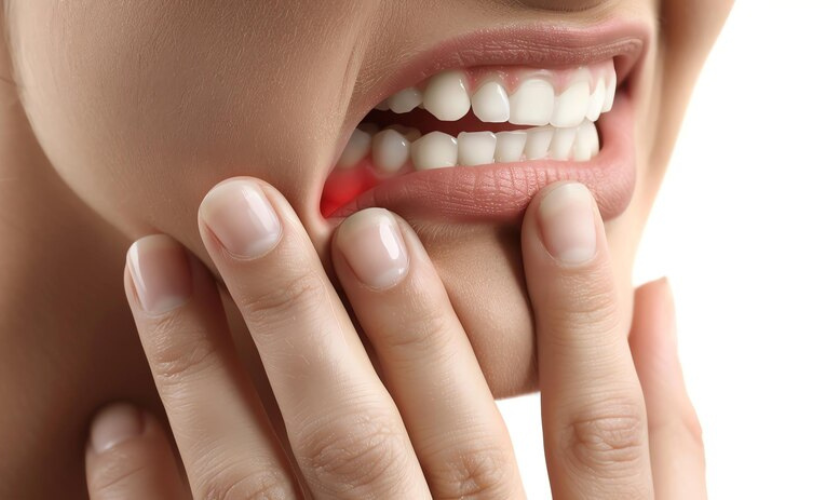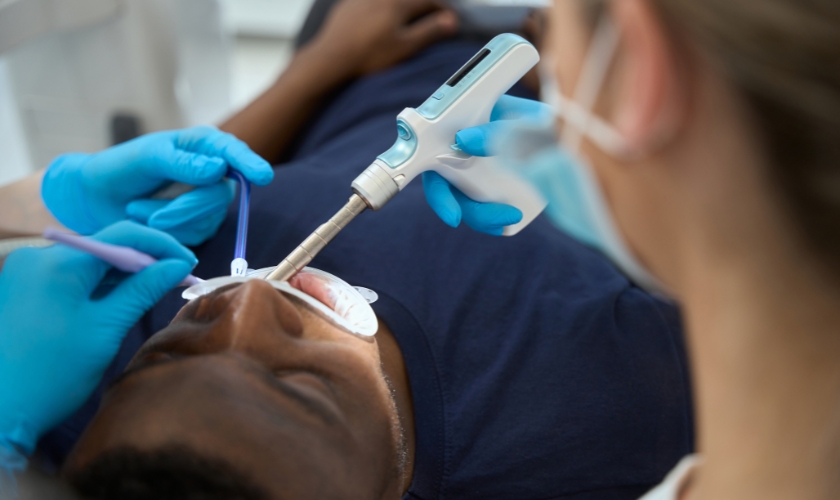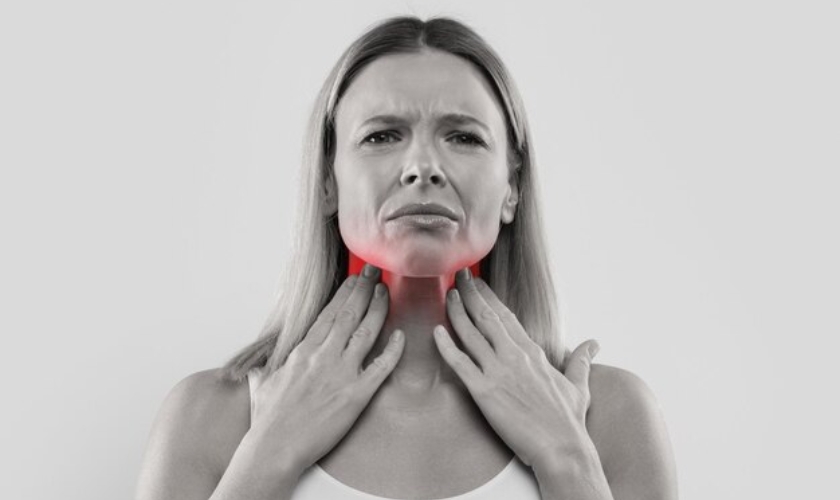
Are you tired of dealing with bleeding gums, bad breath, and tooth sensitivity? In that case, it may be time to consider periodontal therapy. This comprehensive treatment can help restore the health of your gums and teeth while giving you a brighter, more confident smile. In this step-by-step guide, we’ll walk you through what periodontal therapy is all about and why it’s essential for oral health. So relax, and get ready to learn everything you need to know for a healthier smile!
What is Periodontal Disease?
Periodontal disease is a bacterial infection of the gums and bones that hold up your teeth. If left untreated, periodontal disease can cause the loss of one or more teeth.
The first phase of periodontal disease is gingivitis, a milder form. Symptoms of gingivitis include red, swollen, or bleeding gums. Gingivitis is reversible with correct er oral hygiene and regular dental visits.
If gingivitis is left untreated, it can cause periodontitis. Periodontitis is a more acute form of gum disease that can damage the bone and connective tissue that support your teeth. Symptoms of periodontitis include persistent bad breath, deep pockets between your teeth and gums, loose or shifting teeth, and receding gums. Periodontitis is not reversible, but it can be controlled with proper oral hygiene, regular dental visits, and in some cases, surgery.
Symptoms of Periodontal Disease
There are a few key symptoms that indicate Periodontal Disease. These include:
-Swollen or red gums
-Gums that bleed easily
-Persistent bad breath
-Receding gums
-Loose teeth
If you see any of these symptoms, you must visit a dentist immediately for an evaluation. Periodontal disease is a severe condition that can lead to tooth loss and further health problems if left untreated.
Causes of Periodontal Disease
The leading cause of periodontal disease is plaque, a sticky film of bacteria that persistently settles on your teeth. If not removed, plaque can harden and become tartar, contributing to gum disease. Other causes of periodontal disease include:
-Smoking cigarettes or using other tobacco products
-Poor oral hygiene
-Certain medications that decrease the flow of saliva (dry mouth)
-Gum recession
-Crooked teeth or a misaligned bite
-Clenching or grinding your teeth (bruxism)
-Diabetes
-Hormonal changes during puberty, pregnancy, menopause, or monthly menstrual cycles
-A family history of periodontal disease
Types of Periodontal Therapy
There are three types of periodontal therapy: scaling and root planing, gingival flap surgery, and bone grafting.
Scaling and root planing is the most common type of periodontal therapy. It involves eliminating plaque and tartar from the teeth and roots. The roots are then smoothed to allow the gums to reattach to the teeth.
Gingival flap surgery is used to treat more advanced cases of periodontitis. It involves making small incisions in the gum tissue to access the roots of the teeth. The roots are then cleaned and smoothed. The gum tissue is then placed back over the roots.
Bone grafting is used to treat severe cases of periodontitis where there has been bone loss. A bone graft is a procedure where new bone is placed in areas with bone loss. It helps to support the teeth and prevent further bone loss.
Benefits of Periodontal Therapy
Periodontal therapy is a type of dental treatment that is used to treat gum disease. Gum disease is a severe condition that can lead to tooth loss and further health problems. Periodontal therapy can help to prevent these problems from occurring.
There are many benefits of periodontal therapy. This type of therapy can help to:
- Prevent tooth loss: Gum disease is adults’ leading cause of tooth loss. Periodontal treatment can help prevent this by treating gum disease and preventing it from worsening.
- Improve your oral health: Gum disease can cause problems such as bad breath, tooth decay, and mouth sores. Periodontal therapy can help improve oral health by treating gum disease and preventing these other problems.
- Save money: Gum disease can be expensive to treat. Periodontal therapy can save you money in the long run by preventing the need for more expensive treatment options, such as dental implants or dentures.
- Protect your overall health: Gum disease has been linked to other severe health conditions such as heart disease, stroke, and diabetes. Periodontal therapy can help protect your overall health by treating gum disease and preventing these other conditions from occurring.
How to Prepare for Periodontal Therapy?
Periodontal therapy is a necessary part of maintaining good oral health. This therapy can help prevent gum disease and keep your teeth and gums healthy. If you are scheduled for periodontal therapy, there are certain things you can do to prepare for your appointment.
First, brush and floss your teeth thoroughly before your appointment. It will help the dentist or hygienist to get a better look at your teeth and gums and remove any plaque or tartar that may be present.
Second, be sure to wear comfortable clothing to your appointment. You will likely be sitting in the dental chair for an extended period, so wearing too tight or uncomfortable clothes can make the experience more unpleasant.
Third, ask the dentist or hygienist before the process begins if you have any questions or concerns about the procedure. This way, you can feel more comfortable about what is happening and know what to expect.
Preparing for periodontal therapy is essential to ensure the procedure goes smoothly and you get the most out of it. By following these uncomplicated tips, you can ensure your appointment is as stress-free as possible!
Aftercare Following Periodontal Therapy
After your periodontal therapy is complete, proper oral care at home is essential. Here are some aftercare tips:
-Brush your teeth twice daily with a soft-bristled toothbrush.
-Floss daily.
-Use an antibacterial mouthwash daily.
-Avoid smoking.
-Visit your dentist frequently for checkups and cleanings.
Periodontal therapy is integral to maintaining good oral health and taking the time to understand the process is essential. Following a step-by-step guide such as this, you can ensure your gums and teeth are healthy and strong for years to come. Then, with regular visits to your dentist or periodontist and proper home care practices, you can keep your smile looking its best for life.





